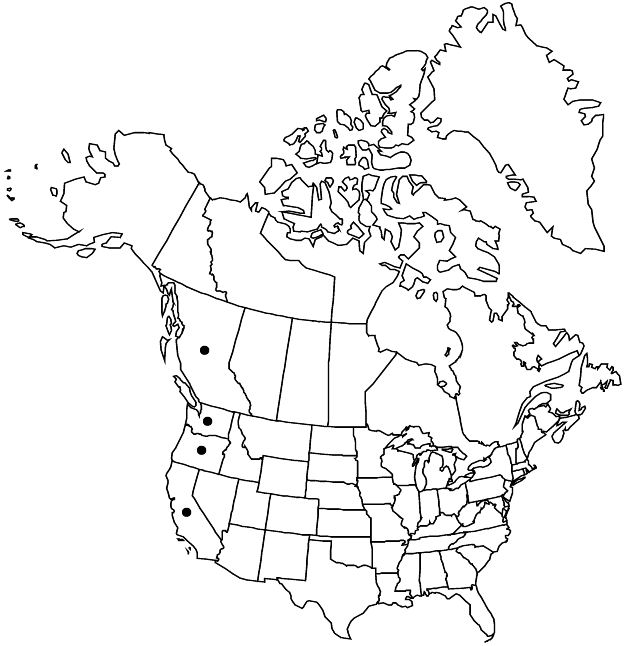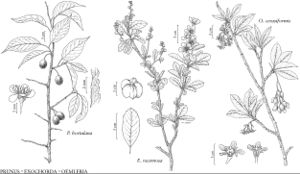Oemleria cerasiformis
Taxon 24: 200. 1975.
Leaves: petiole 5–12 (–15) mm; blade abaxially paler, 5–10 (–15) × 1.5–4 cm, base cuneate, apex acute to obtuse. Inflorescences appearing with leaves, 3–10 cm. Flowers: sepals 1.5–2 mm, glabrous, glabrate, or hairy; petals (3–) 4–6 mm (smaller on pistillate flowers); stamens 10 within hypanthium, 5 exserted from rim; carpels 3–4 (–4.5) mm. Drupes glaucous, taste bitter. 2n = 16.
Phenology: Flowering Feb–Apr.
Habitat: Canyons, roadsides, stream banks, lowland wet woods, dry open woods, chaparral
Elevation: 0–1900 m
Distribution

B.C., Calif., Oreg., Wash.
Discussion
Oemleria cerasiformis is found from the Pacific coast to the western slopes of the Cascades and the northern Sierra Nevada. It is one of the earlier flowering woody plants in the Pacific Northwest and provides good cover and food for birds and other animals. The flowers are foul smelling, part of a fly-pollination syndrome.
Selected References
None.
